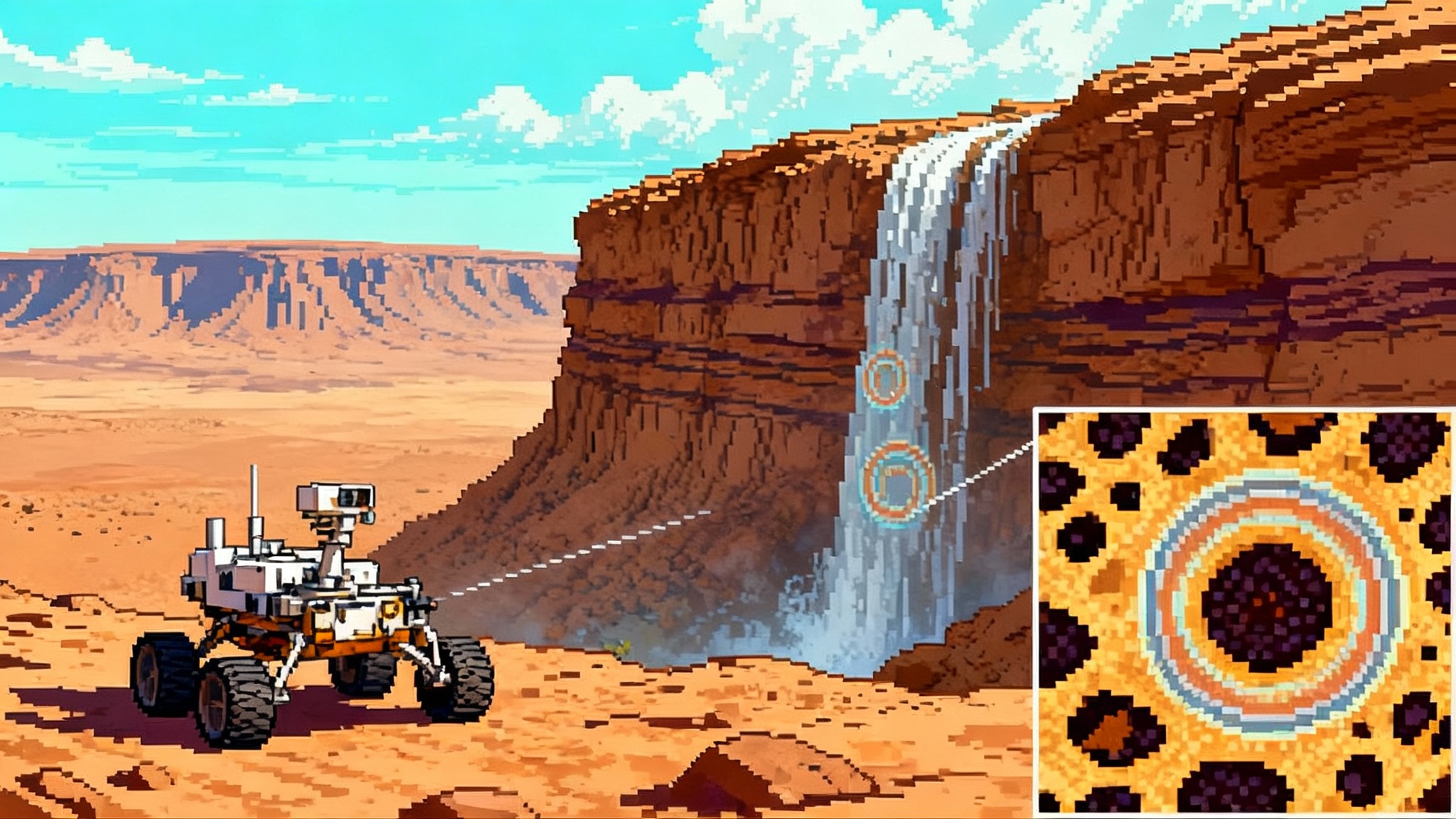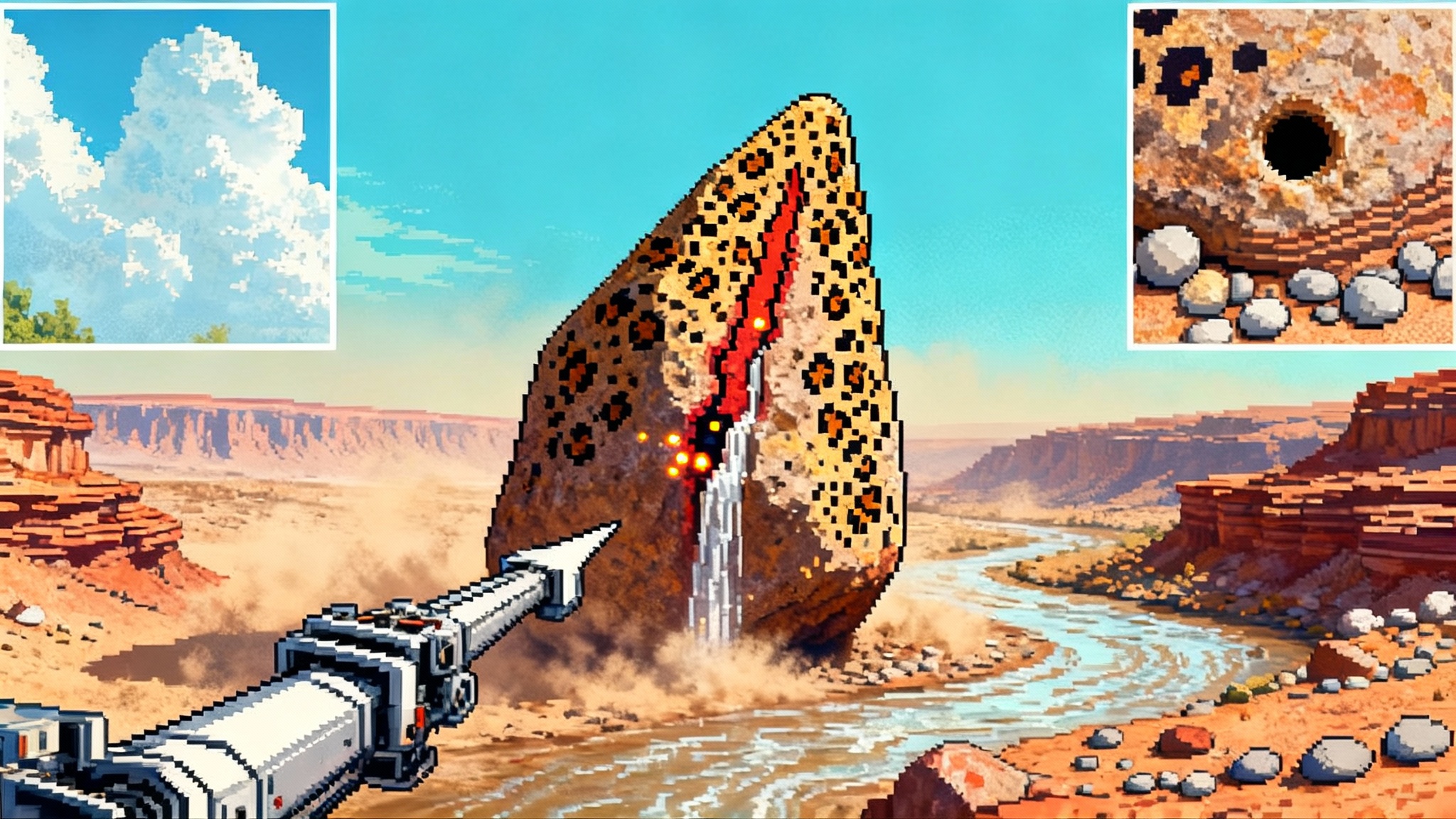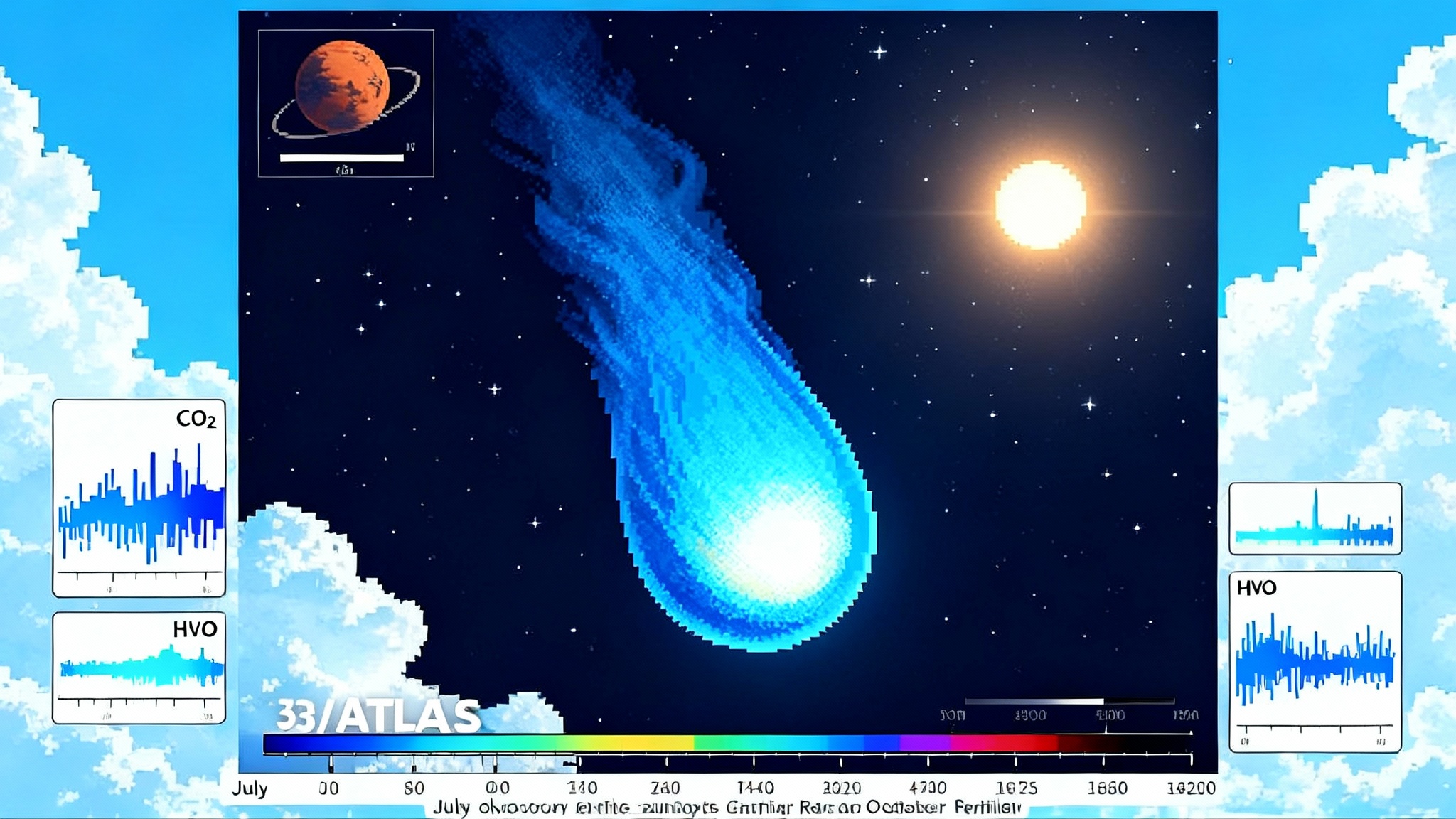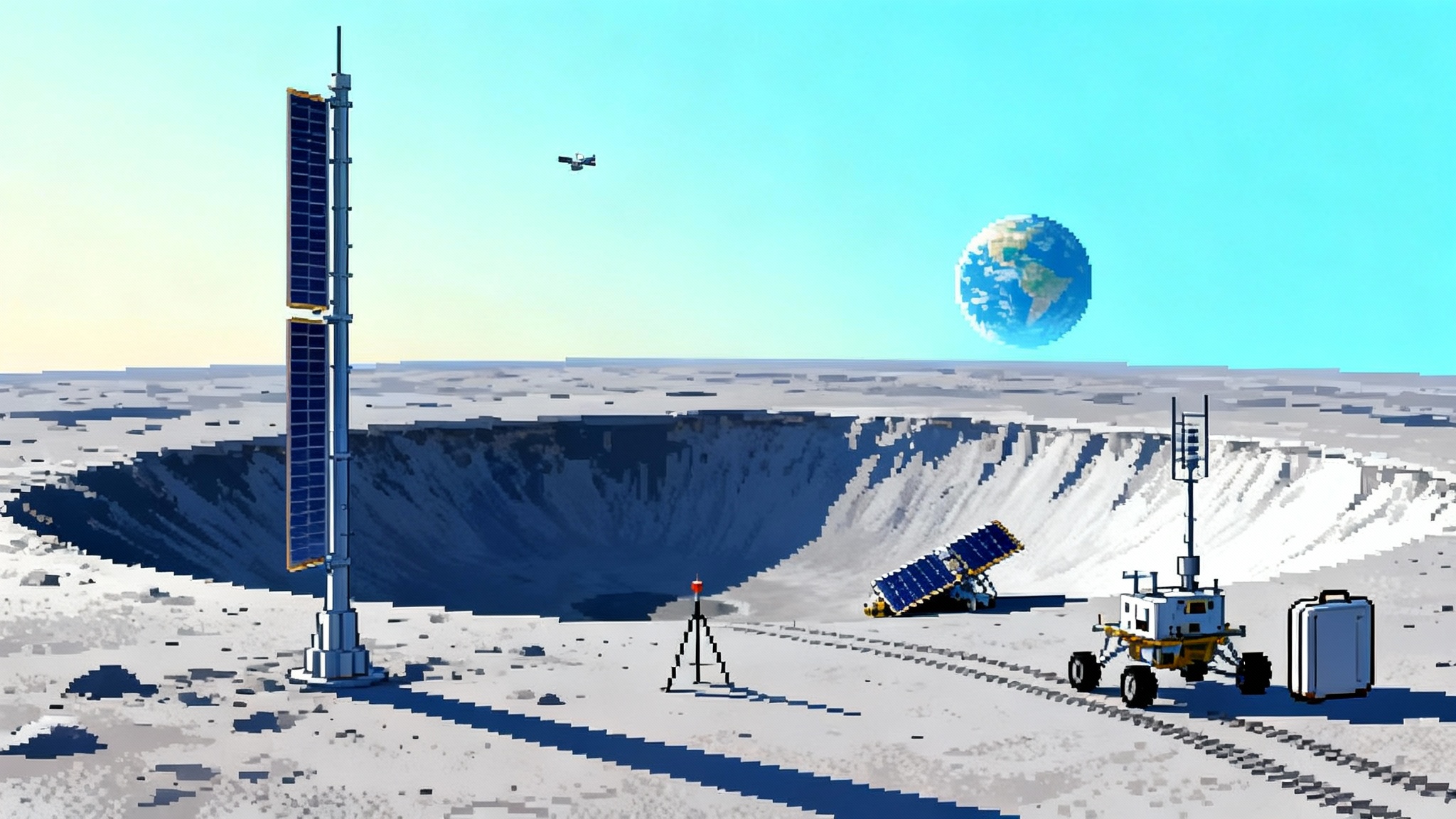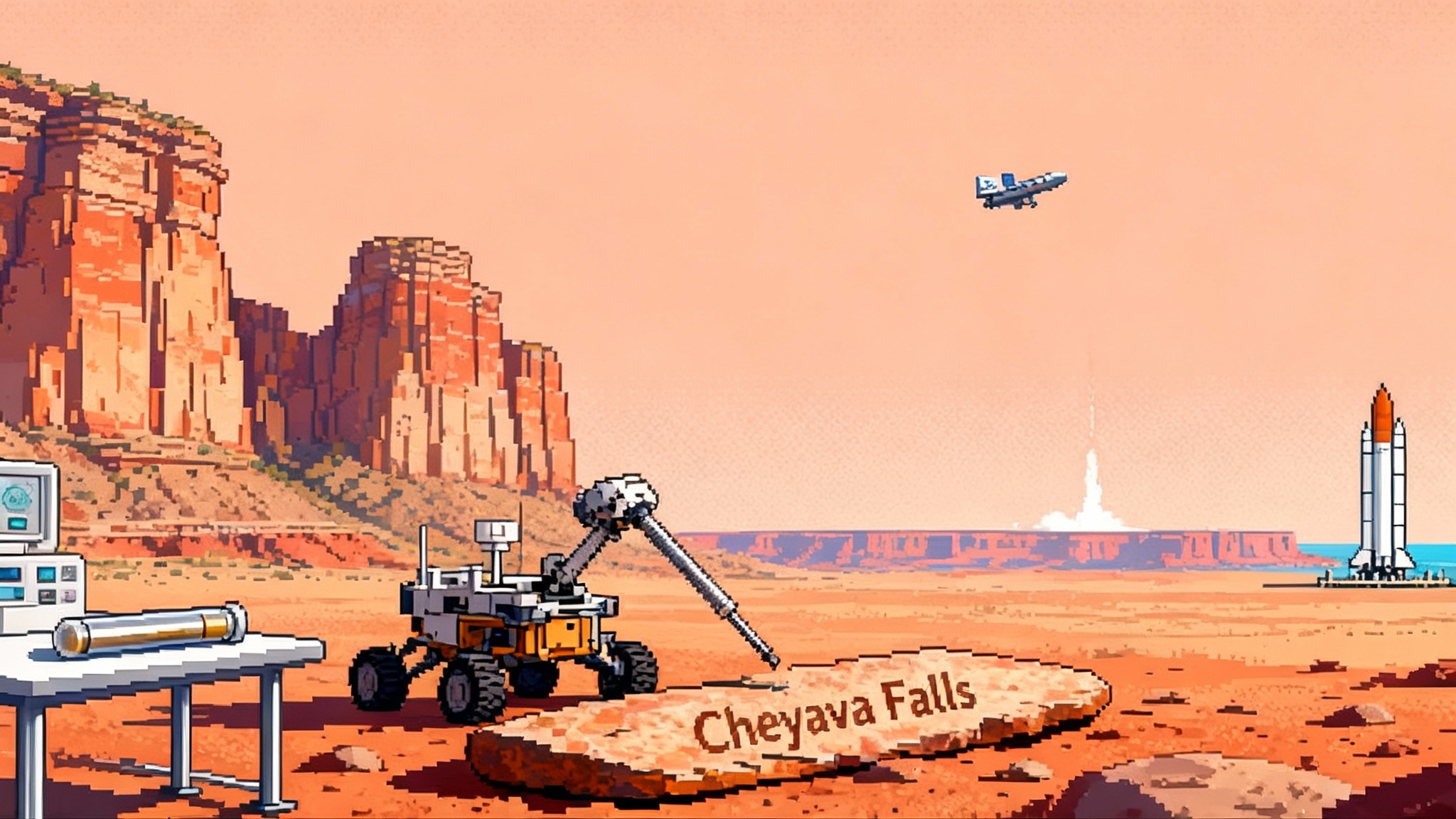Mars just logged its strongest hints of ancient life yet
Two 2025 rover results sharpen the case for past habitability. Inside Perseverance’s possible biosignature textures, Curiosity’s largest organics yet, how CoLD ranks the evidence, and why sample return now drives the timeline.

2025 gave Mars its best two clues yet
If you care about the search for life, 2025 has been a watershed for Mars. Two rover teams reported findings that, together, make the old lakebeds of Jezero and Gale look more promising than ever. Curiosity reanalyzed a classic drill sample and found the largest organic molecules yet. Perseverance, working in Jezero’s ancient river channel, described a mudstone whose chemistry and textures line up as potential biosignatures that fit how life feeds on energy gradients in waterlogged sediments. Neither discovery claims life. Both make the case that Mars once had the ingredients and the chemistry that, on Earth, are closely tied to living systems.
Here is what actually changed this year, what it does and does not mean, and why the only way to raise our confidence to the level of confirmation runs through Mars Sample Return. For more on the Jezero unit and why it matters, see our take on how Sapphire Canyon ups the stakes.
What Curiosity found in Gale Crater
Curiosity drilled a rock called Cumberland way back in 2013 in Gale’s Yellowknife Bay. The sample sat inside the rover’s SAM instrument, a mini lab that heats and analyzes powdered rock. In 2025, the team used a more aggressive preheating technique on leftover Cumberland powder and spotted long carbon chains such as decane, undecane, and dodecane. These are not exotic molecules; on Earth they can come from the breakdown of fatty acids, which living cells use in membranes. They also form without life through abiotic chemistry. That duality is the point. You do not need life to make them, but they show that complex organics can survive for billions of years in Martian mudstone. That is a step up from the simpler organics Curiosity reported in 2018.
The finding matters for two reasons:
- It pushes Martian organic chemistry toward higher complexity. Longer chains suggest that carbon compounds on Mars were not all shredded into tiny fragments by radiation and oxidants.
- It confirms that the sedimentary environment of Gale, a lake and delta system that filled and dried in cycles, is good at preserving organics. If there were ever biological lipids or their breakdown products in that mud, a mudstone like Cumberland is where you would look.
What Perseverance found in Jezero Crater
Perseverance drove into a unit called Bright Angel along Neretva Vallis, the fossil river that once fed Jezero. There the team examined a reddish mudstone with peculiar textures and a mix of iron, phosphorus, and sulfur minerals. They saw millimeter scale leopard spots and ring like reaction fronts with dark rims and paler interiors. Instruments on the rover detected organic carbon, plus minerals that on Earth often form where microbes are busy moving electrons between iron, sulfur, and phosphorus compounds in low oxygen water.
The working hypothesis is careful. These textures and minerals likely record redox reactions that involved organic matter. On Earth, microbial metabolisms commonly drive those reactions in similar muds. Non biological pathways exist too, and the team stresses that both explanations are on the table. The key advance is that this single rock preserves multiple lines of evidence that the environment had the right chemistry for life as we know it. The core from this rock, nicknamed Sapphire Canyon and drilled in July 2024, is now one of the most prized samples in Perseverance’s cache. NASA summarized the result as a potential biosignature in a Jezero mudstone.
For a deeper dive into the textures and what scientists call leopard spots, see our explainer on the leopard spots promise and proof.
CoLD, in plain English
When scientists talk about possible life, they lean on a simple scaffold called the Confidence of Life Detection framework, or CoLD. Think of it as a ladder with seven rungs that moves from a neat hint to a confirmed discovery. Here is a plain language version.
- Detect a possible signal. You find something interesting that could be related to life. An unusual texture, a molecule class, a pattern in isotopes, a gas.
- Rule out contamination. Make sure what you saw is not from your rover, the rocket that launched it, or Earth dust.
- Check the environment. Is there a plausible habitat that could support biology and preserve signs over time.
- Rule out non biology as best you can. Can geology alone make the same signal under the conditions you see.
- Seek independent signals. Different instruments or different kinds of evidence should point to the same story.
- Stress test the hypothesis. Collect more data in more places and see if the life explanation still fits better than the geological alternatives.
- Independent confirmation. Ideally in an Earth lab that can do the most sensitive tests, or by a different mission repeating the result.
Where do the 2025 results sit on this ladder. Curiosity’s long chain organics tick steps 1 to 3. The molecules are real, contamination is unlikely given the instrument blanks and controls, and the lake mud context is good. But step 4 is the wall. Abiotic chemistry is a credible alternative. Perseverance’s mudstone goes a bit further up the middle rungs because the textures, mineralogy, and organics co locate in a setting that fits the kind of energy harvesting microbes use on Earth. That satisfies step 5 in a limited way. Still, the team is explicit that non biological routes exist, so step 4 is not cleared yet. The top rungs are out of reach on Mars because the required tests exceed rover tools.
Why textures plus organics matter together
Either organics or interesting minerals alone would be a curiosity. Together they hint at processes that life exploits. In oxygen poor water, microbes can latch onto iron, sulfur, or phosphorus compounds as electron donors and acceptors. Those reactions change mineral forms and can leave zoned patterns at fine scales. If organic matter is present and the chemistry cycles over time, you can get fronts that migrate through mud, leaving halos and nodes where the reactions were strong. That is the kind of pattern Perseverance documented. You do not need microbes to create it, but microbes are one of the simplest engines that produce it in Earth muds.
Curiosity’s long chain organics add another piece. If early Mars had a steady supply of lipids or their fragments, and if sediments kept them intact, then the planet had both the energy gradients and the building blocks that life prefers. Put bluntly, Mars checked more boxes in 2025 than in 2024.
What this is not
It is not a fossil. It is not even a unique chemical signature of biology. Long chain organics are necessary but not sufficient. Textures are suggestive but ambiguous. Mineral identities such as vivianite or greigite fit certain microbial metabolisms, yet they can grow inorganically too. No single line is compelling on its own. The power lies in convergence and in eliminating alternatives.
The bottleneck that will not budge without sample return
Rovers are brilliant scouts, but they are field tools. To move up the CoLD ladder, scientists need methods that only Earth labs can provide:
- Microscale isotopes. Life on Earth leaves telltale ratios, such as lighter carbon or sulfur isotopes concentrated in specific minerals. Measuring those ratios in spots smaller than a grain of sand is hard on Mars and routine in terrestrial labs.
- Molecular complexity and chirality. Life favors certain handedness in molecules like amino acids and often builds specific distributions of chain lengths. Separating those patterns from abiotic backgrounds requires chromatography and mass spectrometry that are too bulky and power hungry for a rover.
- Nanoscale textures. Electron microscopes can resolve cell like filaments and mineral precipitates that match known biological templates, and can identify organics tucked inside crystal lattices.
- Replication. On Earth, other labs can repeat a finding with different sample prep and different instruments. That independent confirmation is CoLD’s top rung.
Perseverance was designed around that reality. It collects, seals, and stores pencil sized cores precisely so future spacecraft can fetch them. The most compelling core in the set is Sapphire Canyon. If it makes it to an Earth cleanroom intact, scientists can throw the full toolbox at it and either kill the life hypothesis or let it survive every alternative.
Why Mars Sample Return was reworked
The original plan for Mars Sample Return was ambitious and expensive. By April 2024, NASA said a conservative architecture would not deliver samples until around 2040. The agency then opened the door to leaner designs and asked industry for proposals that could cut time, cost, and complexity while keeping risk in bounds. That reset reflected budget pressure and hard lessons from other flagship missions. It also acknowledged a straightforward truth. The science is turning hot and waiting until 2040 would squander momentum.
For where the policy and funding winds are blowing, see how the sample return race in 2025 is shaping up.
What an accelerated path could look like
The outline is simple even if the engineering is not. A lander touches down near Perseverance. A small rocket called the Mars Ascent Vehicle launches a sealed sample canister into orbit. An orbiter captures that canister and heads home to drop it into an Earth entry capsule. The pieces that could speed things up are not science fiction:
- Smaller, simpler lander. If the sample canister and the ascent vehicle shrink, a familiar sky crane could set the stack down near Perseverance. Less new landing tech usually means fewer delays.
- Fewer elements. Earlier designs split the mission across multiple launches and vehicles. Fewer handoffs and rendezvous points reduce risk.
- Off the shelf parts. The more the architecture leans on flight proven spacecraft buses, propulsion, and avionics, the faster it moves through testing.
- Industry competition. With real money on the table, multiple teams can trade designs that shave mass and cost. NASA buys down risk with parallel efforts, then down selects.
External to the architecture, launch capacity is improving. Heavy lift rockets can throw more mass toward Mars, which buys flexibility in design trades. Communications and navigation hardware have matured. Autonomy for sample handling is better than it was when the first concepts were drawn. None of that guarantees an earlier return. It does move the schedule from impossible to plausible for the 2030s if funding holds and technical surprises are managed.
What would count as confirmation
If cores like Sapphire Canyon reach Earth intact, what tests would push the CoLD score to the top:
- Strong isotope fractionations in carbon or sulfur that match known biological pathways and are co located with the textures and minerals seen by Perseverance.
- Lipid biomarkers or other complex molecules with distributions that are typical of microbes rather than abiotic syntheses, with contamination ruled out by cleanroom blanks and independent labs.
- Micro to nanoscale textures that are not just lifelike, but statistically and chemically consistent with fossil biofilms or microbial framboids, again embedded in the right minerals and ages.
- Convergence of all of the above in several subsamples from the same core and in other cores from the same unit.
Even then, scientists will argue. They should. But a package of isotopes, molecules, and textures that hang together under every test is how we proved life in the oldest rocks on Earth. Mars will not get an easier grading curve.
What this could mean if it holds up
The practical meaning of 2025’s results is not that we have found Martian microbes. It is that the best places we have found so far preserve the kinds of chemistry that let life run and leave traces we can still read. If those traces survive careful Earth lab work, then Mars had biology early. That would tell us two big things:
- Life can start in parallel on rocky worlds with water, energy gradients, and carbon chemistry.
- It can persist long enough to fossilize, even without continents, plate tectonics, or a thick protective magnetic field.
That would turn Mars from a desert geology story into a biology story and would shape how we explore ocean worlds like Europa and Enceladus. It would sharpen targets for future human missions as well, because the best science often comes from humans doing fine scale field work guided by instruments.
The sober forecast
A decade is a realistic timescale for confirmation, even with acceleration. The scientific teams are conservative by design. That is what you want on a question this big. The near term playbook is clear. Perseverance keeps coring and characterizing. Curiosity keeps probing and reanalyzing old samples with clever tweaks. NASA and industry converge on a sample return plan that can launch in the early 2030s. If everything lines up, caches from Jezero reach Earth in the mid to late 2030s and lab work begins in earnest.
There will be false alarms and cold trails along the way. The CoLD framework is useful because it puts those disappointments into context. Ruling out a tempting idea is still progress if it raises the weight on the explanation that survives.
How to watch from here
If you want to follow the story without getting lost in jargon, track three things:
- Look for new multi line evidence in Jezero mudstones that ties textures, minerals, and organics to a single story.
- Watch whether Curiosity or Perseverance find any pattern in organics that looks less like abiotic chemistry and more like biological leftovers.
- Pay attention to NASA’s sample return milestones and whether the mission’s moving parts simplify rather than balloon.
If two of those three needles move in the right direction, then 2025 will be remembered as the year Mars finally stopped whispering and started talking.


